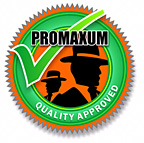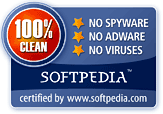
Version 2019 (5.71)
Avantages
Manifeste de WIT Caractéristiques Copies d'écran Téléchargement Achat sécurisé Satisfait ou remboursé Support FAQ Tutoriels Press book Exemples de sites WIT
FreeWIT, version gratuite simplifiée !
Systèmes supportés :
Licences :
24.99 € (28.60 $ US) Acheter maintenant 199 € (228.00 $ US) Acheter maintenant Mises à jour illimitées pour les utilisateurs enregistrés ! |
WebIdeaTree: Web site maintenance on AutoPilot By Ernest Perez, Ph.D., Group Leader, Oregon State Library. Although the Web is a major advance in information accessibility, there's considerable cost involved. I don't mean in identifiable monetary costs for operating site servers, but in the mushrooming of real labor costs when you consider design and planning, site creation, and site maintenance. The latter is a true black hole when it comes to labor costs. SOLVING WEB SITE MAINTENANCE PROBLEMS Enter Web Idea Tree (WIT) software for Windows operating systems, authored by Christophe Guibert, a developer located in France [www.webideatree.com]. Here's a magic solution to minimize site creation
and site maintenance labor headaches.
WIT manages all site-building details for you, assuring link consistency, even after major modifications and information rearrangement. Best of all, you don't need to maintain the site with piecemeal HTML "spaghetti code."
You instead modify and update a single content file, then totally rebuild the Web site. You can build dozens or hundreds of pages in seconds.
THE OUTLINE TREE
WIT offers normal outliner software functionality, with easy generation of hierarchical topics and subtopics. It has drag and drop or Control-Key ability to shift and reorganize outline topics. The WYSIWYG editor offers easy
entry of Web page text and other content for the page displays that accompany each outline topic. The editor has three display tabs: Normal, which displays only the simple text for direct editing; HTML, which is a pure HTML format display, modifiable for
precise control; and Page Preview, which displays full page in browserlike mode. Finally, a simple icon click calls up your preferred browser to inspect a single page or the full site in actual Web page display mode.
BUILDING THE SITE Once the site is generated, you're done with the HTML stuff. By the way, the HTML output is easily adaptable to multiple purposes. WIT HTML file output is suited for use on Web sites, LANs, hard disks, or CD-ROMs. You can
easily create and maintain content in multiple formats, including Web sites, electronic books, User Manuals, even context-sensitive Help Files for computer applications.
BUT WAIT, THERE'S MORE WIT automatically produces a hierarchical Table of Contents or site map using your topic titles or page names. You can also produce a high-quality linked index, with WIT's "Keyword" function. With keywords you can index page
content, using controlled terms or phrases. These may be entered on the fly or imported from existing keyword listings. You then use a pull-down listing to assign single or multiple Keywords to any site pages. This automatically produces a browsable
linked index. In a late upgrade, author Christophe Guibert has added the ability to jump to the index term listings directly from assigned Keywords displayed on pages. You can thus easily browse the entries under those headings, with a simple and easy
"more like this" functionality. The author has thus incorporated simple and quite usable controlled vocabulary and indexing functions perfectly suited to Web site indexing.
"SIMPLE" MEANS "OFTEN" WIT turns Web site maintenance into the proverbial "piece of cake." It's super-easy to enter modifications or new material, incorporate graphics, new sub-pages, and to do major reorganization of your site. With WIT site regeneration and uploading features, you can literally update your site in minutes. No more Tech Support hand-holding, or the delays of working through the endlessly busy designated Webmaster. No updating hassle means you'll update your site easily and frequently. PRICING & SUPPORT There's a surprisingly low cost for Web Idea Tree's horsepower and functionality. A Personal License, reserved for private and nonprofit use, costs only $30. Even the Professional License, at $300, for commercial or corporate use, is really quite cost-effective, when you consider site maintenance efficiencies. You can even download a 30-day demo at the Web Idea Tree site http://www.webideatree.com. Program author Christophe Guibert is located in France, so there's no free telephone support. Nevertheless, registered users get technical support from the author (by e-mail) and free version upgrades. Guibert has been quite responsive to my questions and suggestions. CONCLUSION I strongly recommend Web Idea Tree; it's a robust and useful product. Don't expect it to create slick professional pages like Yahoo! or Google, not out of the box. The supplied templates are a bit more traditionally
text-oriented, although pretty attractive. I suspect, however, that a skilled CSS coder can do wonders working with WIT templates. Given the existence of a 30-day free trial demonstration download, it's hard to imagine how you could go wrong testing out
the capabilities of Web Idea Tree.
Address communications to Ernest Perez, Ph.D., Group Leader, Oregon State Library, 250 Winter St. N.W., Salem OR 97310, 503/378-4243, ext. 257, email: ernest.r.perez@state.or.us .
|



